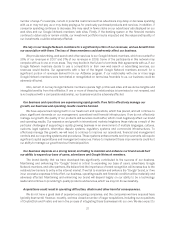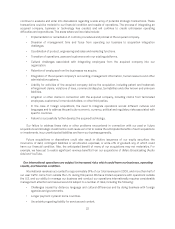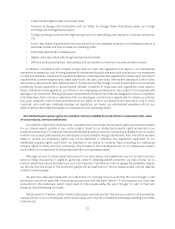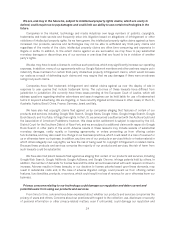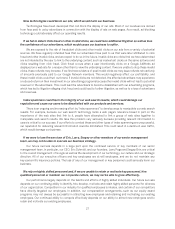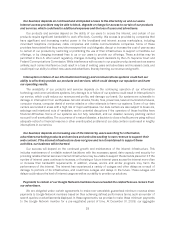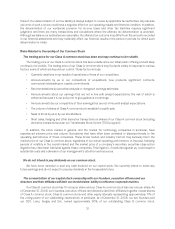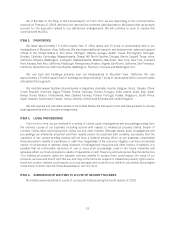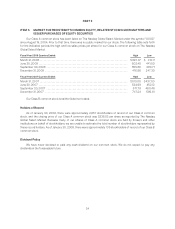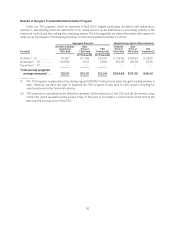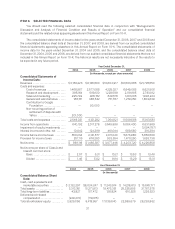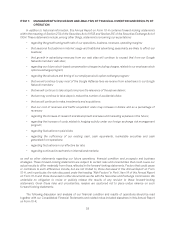Google 2008 Annual Report Download - page 47
Download and view the complete annual report
Please find page 47 of the 2008 Google annual report below. You can navigate through the pages in the report by either clicking on the pages listed below, or by using the keyword search tool below to find specific information within the annual report.thereof. Our determination of our tax liability is always subject to review by applicable tax authorities. Any adverse
outcome of such a review could have a negative effect on our operating results and financial condition. In addition,
the determination of our worldwide provision for income taxes and other tax liabilities requires significant
judgment, and there are many transactions and calculations where the ultimate tax determination is uncertain.
Although we believe our estimates are reasonable, the ultimate tax outcome may differ from the amounts recorded
in our financial statements and may materially affect our financial results in the period or periods for which such
determination is made.
Risks Related to Ownership of Our Common Stock
The trading price for our Class A common stock has been and may continue to be volatile.
The trading price of our Class A common stock has been volatile since our initial public offering and will likely
continue to be volatile. The trading price of our Class A common stock may fluctuate widely in response to various
factors, some of which are beyond our control. These factors include:
• Quarterly variations in our results of operations or those of our competitors.
• Announcements by us or our competitors of acquisitions, new products, significant contracts,
commercial relationships or capital commitments.
• Recommendations by securities analysts or changes in earnings estimates.
• Announcements about our earnings that are not in line with analyst expectations, the risk of which is
enhanced because it is our policy not to give guidance on earnings.
• Announcements by our competitors of their earnings that are not in line with analyst expectations.
• The volume of shares of Class A common stock available for public sale.
• Sales of stock by us or by our stockholders.
• Short sales, hedging and other derivative transactions on shares of our Class A common stock (including
derivative transactions under our Transferable Stock Option (TSO) program).
In addition, the stock market in general, and the market for technology companies in particular, have
experienced extreme price and volume fluctuations that have often been unrelated or disproportionate to the
operating performance of those companies. These broad market and industry factors may seriously harm the
market price of our Class A common stock, regardless of our actual operating performance. In the past, following
periods of volatility in the overall market and the market price of a company’s securities, securities class-action
litigation has often been instituted against these companies. This litigation, if instituted against us, could result in
substantial costs and a diversion of our management’s attention and resources.
We do not intend to pay dividends on our common stock.
We have never declared or paid any cash dividend on our capital stock. We currently intend to retain any
future earnings and do not expect to pay any dividends in the foreseeable future.
The concentration of our capital stock ownership with our founders, executive officers and our
directors and their affiliates will limit our stockholders’ ability to influence corporate matters.
Our Class B common stock has 10 votes per share and our Class A common stock has one vote per share. As
of December 31, 2008, our founders, executive officers and directors (and their affiliates) together owned shares
of Class A common stock, Class B common stock and other equity interests representing approximately 71% of
the voting power of our outstanding capital stock. In particular, as of December 31, 2008, our two founders and
our CEO, Larry, Sergey and Eric, owned approximately 90% of our outstanding Class B common stock,
31


